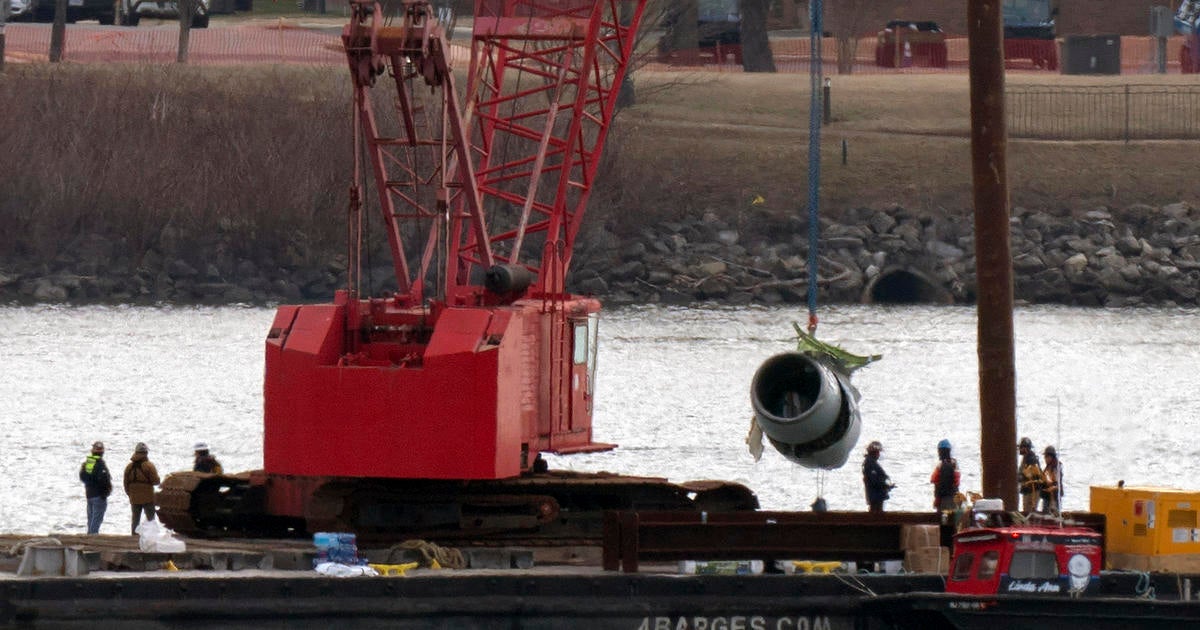The wreckage of the American Airlines plane that crashed into the Potomac River after colliding with an Army Black Hawk helicopter last week over Washington, D.C., was being removed from the water on Monday.
Crews spent the weekend positioning cranes and other key equipment to begin removing the wreckage.
“Our goal is to really lift as much as we can, given the fact that we are also accounting for the human remains component,” Col. Francis Pera with the U.S. Army Corps of Engineers told reporters.
Jose Luis Magana/AP
Under a massive police escort Sunday, the families of the 67 people killed in Wednesday’s collision gathered within sight of the wreckage just off one of the runways at Washington’s Reagan National Airport. Officials said 55 bodies have been recovered.
Investigators with the National Transportation Safety Board said black box data indicates the airliner was flying at around 325 feet ahead of the collision. That’s well higher than the 200 feet set by the Federal Aviation Administration for helicopter traffic in that area.
According to the NTSB, the airline pilots appeared to pull up about a second before the crash, and investigators are working to understand if the air traffic controllers’ screens were providing the helicopter’s actual altitude leading up to the collision.
The agency said five people were in the airport control tower Wednesday night. That includes two controllers who CBS News has learned were doing multiple jobs.
“From tragedy, we draw knowledge to improve the safety for us all,” NTSB member Todd Inman told reporters. “That’s what we’re doing right now, dealing with tragedy, but we need to improve safety.”
The Army has identified all three people who were on the helicopter as pilots Chief Warrant Officer 2 Andrew Eaves and Capt. Rebecca Lobach and Staff Sgt. Ryan O’Hara, the crew chief.
“These were two experienced, qualified pilots to fly in this local area,” said Col. Mark Ott, deputy director of aviation for the Army. “This is something they’ve done many times before, and they were simply out flying a training mission that’s required to re-evaluate, just like every Army pilot does on an annual basis. You get re-evaluated, re-signed off to fly in your local area.”




